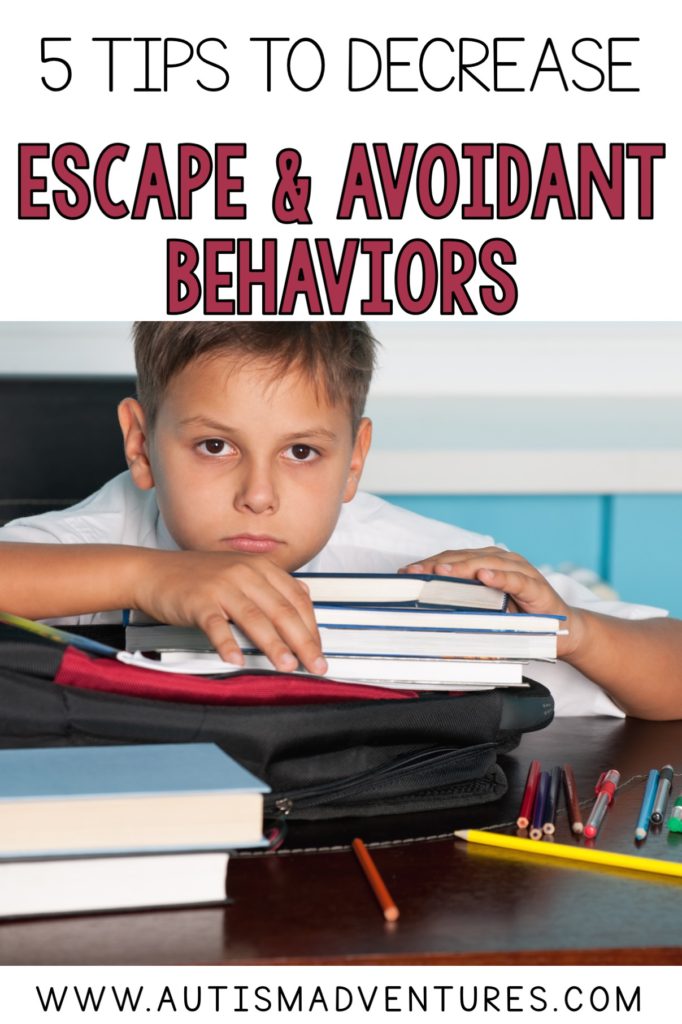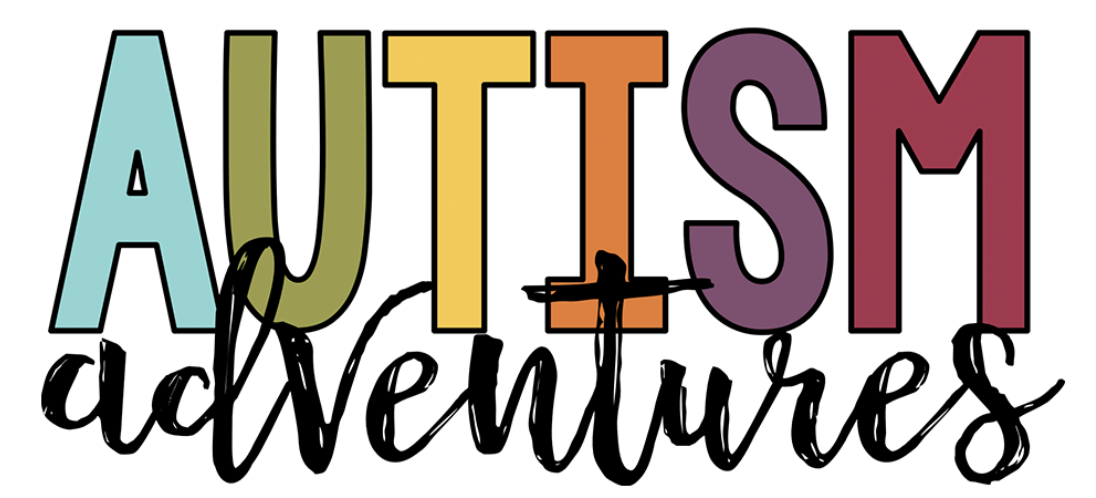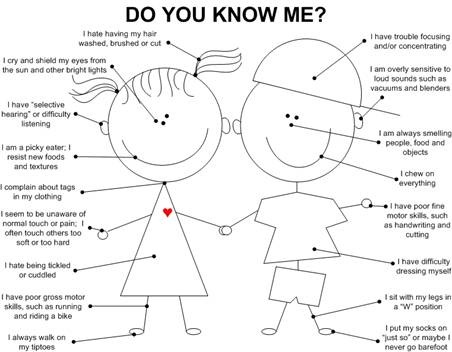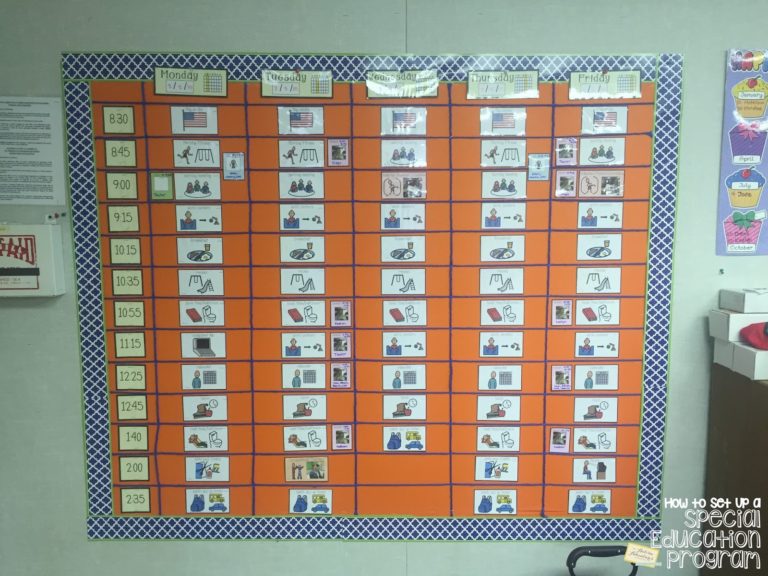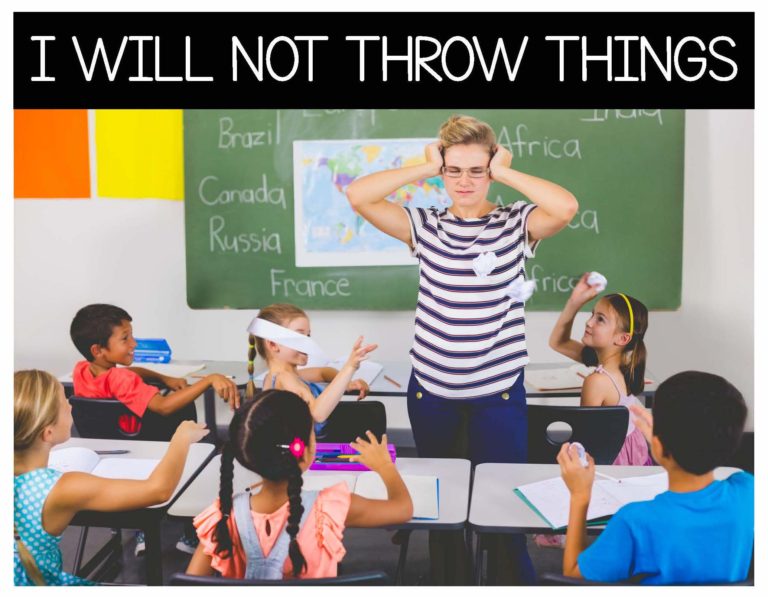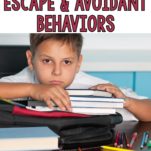Five tips to Decrease Escape and Avoidant Behavior
Five tips to decrease escape and avoidant behavior in the classroom (or at home!)
Asking to go to the bathroom 5 times in an hour. Having a “belly ache” every day requiring a nurses visit. Acting out to distracting and delay the start of a lesson. These are all examples of behaviors that might be maintained by escape or avoidance. We’ve all seen it! Once you’ve determined that a behavior is maintained by escape – what can you do?! These tips are a great start and can be individualized to meet your own classrooms needs!
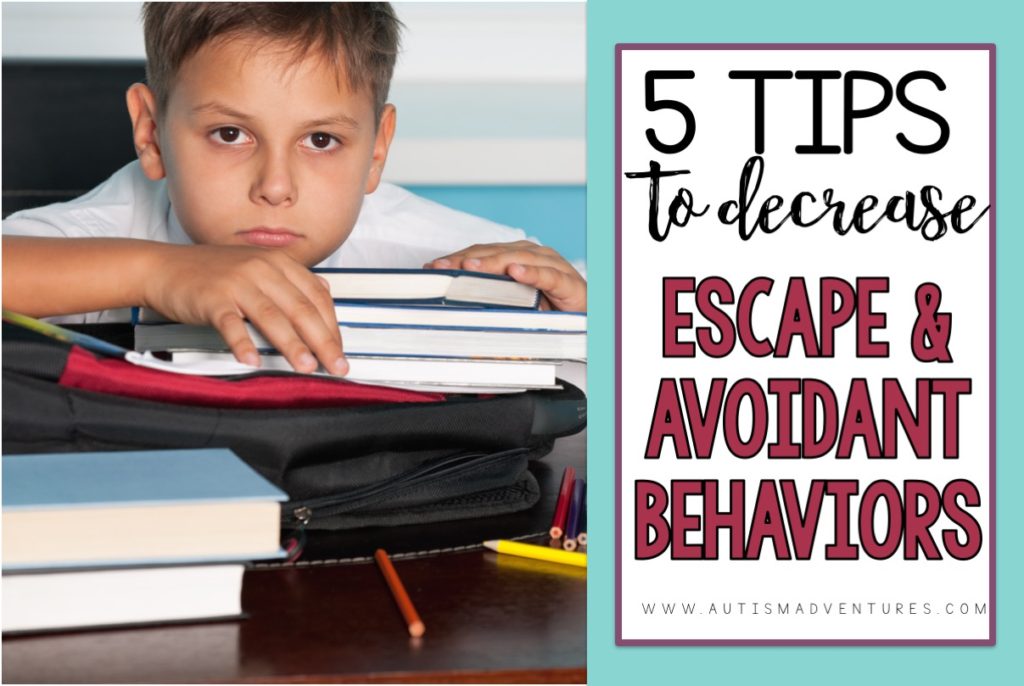
This post is part of a mini series helping understand the ABC’s and Functions of behavior. To read more about ABC’s and Functions of behavior, read more HERE.
1. Make sure students know how to get out of doing things appropriately
In a perfect world our students would diligently work through tasks, worksheets and assignments. They will also do so while smiling and enjoying it all the while. In reality, our students need breaks just as much as we do. Sometimes they don’t want to work, sometimes it feels too hard, sometimes they haven’t slept, or they’re hungry, or they’re antsy. While we might prefer them not to ask at all, the reality is that our students will likely find a way to get a break or escape a task if they want to. The difference is whether or not it will be appropriate.
A student may choose to misbehave in order to be sent to the office to get a break to walk around or avoid an assignment, act out to cause some commotion to delay the lesson, or “forget” their homework at school so that they don’t have to do it. Giving students appropriate ways to take breaks or get “out” of things will go a long way in decreasing inappropriate escape behaviors. To read more about breaks in the classroom, read more here. This can be as simple as being able to ask to go for a walk, a “break” card, or a “get out of homework free” pass.
2. “Reward” doing hard things
When we do hard things, usually there is some reward. Some of these can be when we get paid, we get our degree, we have a happy family, the list goes on. When our students do hard things like new and difficult assignments or pushing through difficulties focusing during lessons, they oftentimes don’t really get rewarded or reinforced for it.
By setting up opportunities to be earning something, the motivation to push through and complete tasks will be much higher. Getting a “homework pass” after a week of complete assignments, earning a pizza party or movie day after the class hits a goal, or earning extra recess minutes for staying on task can make a huge difference. ( by nature of reinforcement and pairing, will increase the likelihood of these positive behaviors occurring in the future even without the reward!) To read about how Melissa implemented a reward system within her work centers, click here.
3. “Grandma’s rule”
Everyone’s heard (or said) “eat your dinner first, and then you can have the cookie!” or something similar. In behavior analysis we call this the premack principle (or grandma’s rule!) Without getting too technical, it states that high probability behaviors will reinforce low probability behaviors. Simply put, it is a first/then system. You can grab a first/then card here. Letting students know that we need to finish this assignment first (low probability – students don’t want to!) and then it’s time for recess (high probability – students want to!) will increase the likelihood of them completing the assignment. Setting up expectations and letting students know what they’re working for can drastically help motivate students to push through hard things. It will also decrease their need to act out to get out of it. This is my favorite tips to decrease escape and avoidant behaviors.
4. Follow through with directions
Mean what you say and say what you mean. It’s extremely important that students learn that you mean what you say and will follow through. If a student knows that if they beg and plead and cry that you might let them out of an assignment or lesson, you bet that they’re going to continue to do just that! Be sure to follow through with even the smallest of tasks. If you asked Johnny to please put his coat and backpack on the hook and he wants to continue to play with his friend – let him know that he can play after he completes the task and follow through, even if that means guiding him to it. Consistency is key. Student’s will eventually learn that (inappropriate) behaviors that attempt to stall, avoid or escape won’t work and just aren’t worth the effort.
5. Examine what’s really going on
As with everything, it’s important to determine what’s really going on. A student might not understand the assignment and is embarrassed to ask for help so they’re trying to get out of it. Another student might be scared to read aloud in front of the class and conveniently ask to go to the bathroom every time it’s almost her turn. Another student might have limited outlets to move their body and gets so restless during lessons they’ll do anything to get up and walk around. Be sure to examine the motivation behind needing to escape or avoid doing things and take that into consideration when structuring the day or the lesson. Read more about the ABC’s of Behavior here to help you determine what is really going on.
Addressing behaviors aimed to escape or avoid tasks can be tricky! I hope these tips are helpful with decreasing escape and avoidant behaviors in the classroom! It’s important to remember that we all want to get out of doing things sometimes. We can set our students up for success if we teach them to practice the skill of doing hard things (even when you don’t want to), and why, when, and how it’s appropriate to ask to sit something out.

Like what you read? Don’t forget it, PIN IT!
